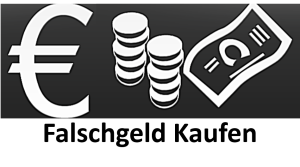
Corey Parkman
100% Real Counterfeit Money: Understanding the Complex World of Currency Replication
Counterfeit money represents a fascinating, albeit unlawful, aspect of the modern economy. The expression "100% real counterfeit money" is an appealing contradiction that encapsulates the debate surrounding currency production and legality. While real in the sense that it mimics real banknotes, counterfeit currency is naturally fraudulent. This article looks into the intricacies of counterfeit money, the science behind its replication, the legal ramifications, and the ongoing efforts to fight its flow.
The Basics of Counterfeiting
Counterfeiting is the prohibited replica of currency, developed to deceive people and organizations into accepting it as genuine. The counterfeiters use different methods and falschgeld kaufen kryptowährung tools to create notes that carefully look like official currency. This practice has been a part of human history for centuries, and with the advancement of innovation, its elegance has just increased.
Secret Characteristics of Counterfeit Money
Comprehending how to determine counterfeit notes helps in the battle against this concern. Here are some typical attributes that help in detection:
Watermarks: Genuine currency often features unique watermarks that are challenging to reproduce.
Color-Shifting Ink: Many contemporary banknotes use ink that alters color when viewed from different angles.
Microprinting: Small text that is hard to see with the naked eye but exists on genuine notes is frequently missing or replicated poorly on counterfeit costs.
Feel and Texture: Genuine money is printed on an unique type of paper, providing it a particular feel. Counterfeit notes frequently feel different, as they might be printed on regular paper.
Security Threads: This ingrained thread is a typical security function in many banknotes.
Regardless of these features, counterfeiters have created increasingly advanced methods that in some cases can deceive even careful people.
The Legal Landscape of Counterfeiting
Counterfeiting is a crime in practically every nation worldwide. The legal implications can be serious, including whatever from large fines to significant prison sentences. Additionally, legislation is continually adapted to address new techniques of counterfeiting.
In the United States, for instance, the Secret Service was originally founded to fight currency counterfeiting and has stayed at the leading edge of this fight. They use numerous techniques, consisting of public education, to help people determine counterfeit money.
Legal Consequences of Counterfeiting
The repercussions of counterfeiting can vary based upon jurisdiction but often consist of:
Criminal Charges: Most nations categorize counterfeiting as a felony or severe offense.Fines: Offenders may be needed to pay considerable monetary fines.Jail time: Convictions can cause prolonged jail sentences.Restitution: In some cases, counterfeiters may be purchased to repay victims.Counterfeit Money in the Digital Age
With the increase of digital technology, consisting of 3D printing and sophisticated graphics software, the process of creating counterfeit currency has become more accessible. This technological development poses challenges to law enforcement and financial institutions striving to protect the stability of global currencies.
Steps to Combat Counterfeiting
In response to these obstacles, financial institutions, federal governments, and law enforcement companies have carried out various protective measures, consisting of:
Advanced Security Features: Continuous improvement in the security functions of banknotes, including holograms and intricate styles.
Public Awareness Campaigns: Educating people on how to find counterfeit notes and report suspicious activities.
Partnership Between Agencies: Cooperation in between global police and financial entities is important in tracking down and prosecuting counterfeiters.
The Role of Enthusiasts and Collectors
Interestingly, while counterfeit money is illegal, many collectors and enthusiasts concentrate on the research study of counterfeit currencies as a niche pastime. For these individuals, understanding the history, strategies, and artistry associated with counterfeit money can be both educational and entertaining.
Gathering Counterfeit Currency: What You Should Know
For those drawn to the world of counterfeit money as a collector's product:
Legal Implications: It is necessary to guarantee that the collection does not include having counterfeit money that could be mistaken genuine currency.
Historic Value: Some counterfeit notes, especially those that are old or produced in restricted runs, can have considerable historic value.
Educational Opportunities: Collecting counterfeit currency can offer insights into financial history and the development of currency design.
Frequently Asked Questions About Counterfeit Money
Here are some often asked questions concerning counterfeit money:
1. What is counterfeit money?
Counterfeit money is a replica of currency that attempts to duplicate genuine expenses with the intent to trick and defraud those who accept it.
2. How can I inform if a costs is counterfeit?
To recognize counterfeit expenses, take a look at the watermark, color-shifting ink, microprinting, and feel of the note, to name a few security functions typically present in authentic currency.
3. What should I do if I get a counterfeit costs?
If you suspect you have gotten counterfeit currency, do not attempt to utilize or circulate it. Rather, report it to local police or the pertinent financial institution.
4. Is it illegal to possess counterfeit money?
Yes, possessing counterfeit money can lead to criminal charges, consisting of fines and jail time. It is important to avoid any association with counterfeit currency.
5. Can counterfeit money look like real money?
Yes, modern-day counterfeit money can be quite convincing, typically simulating genuine currency closely due to sophisticated printing strategies. However, mindful assessment typically exposes inconsistencies.
The world of counterfeit money is both intriguing and greatly laden with legal implications. While it represents a severe criminal offense that undermines the economy, comprehending its characteristics can offer important insights into the more comprehensive context of currency management and economic stability. People must stay watchful versus counterfeiting while valuing the historic and technological stories that surround it. Awareness and education are vital in combating this pervasive issue, making sure a safer monetary environment for everybody.
Made By Revive Sites
 Italian
Italian
 हिन्दी
हिन्दी
 Arabic
Arabic
 Chinese
Chinese
 English
English
 French
French
 German
German
 Portuguese
Portuguese
 Russian
Russian
 Spanish
Spanish
 Turkish
Turkish
